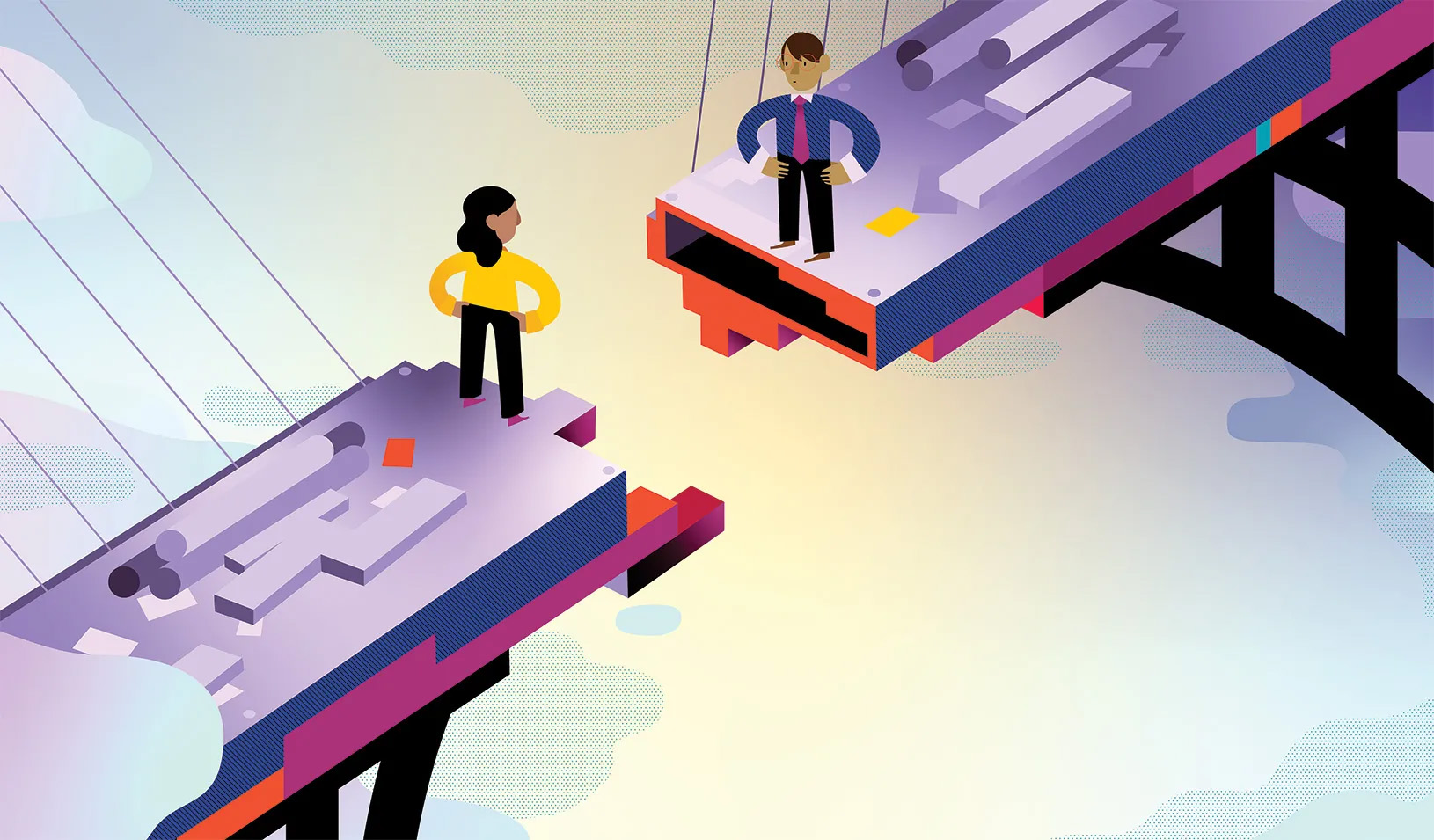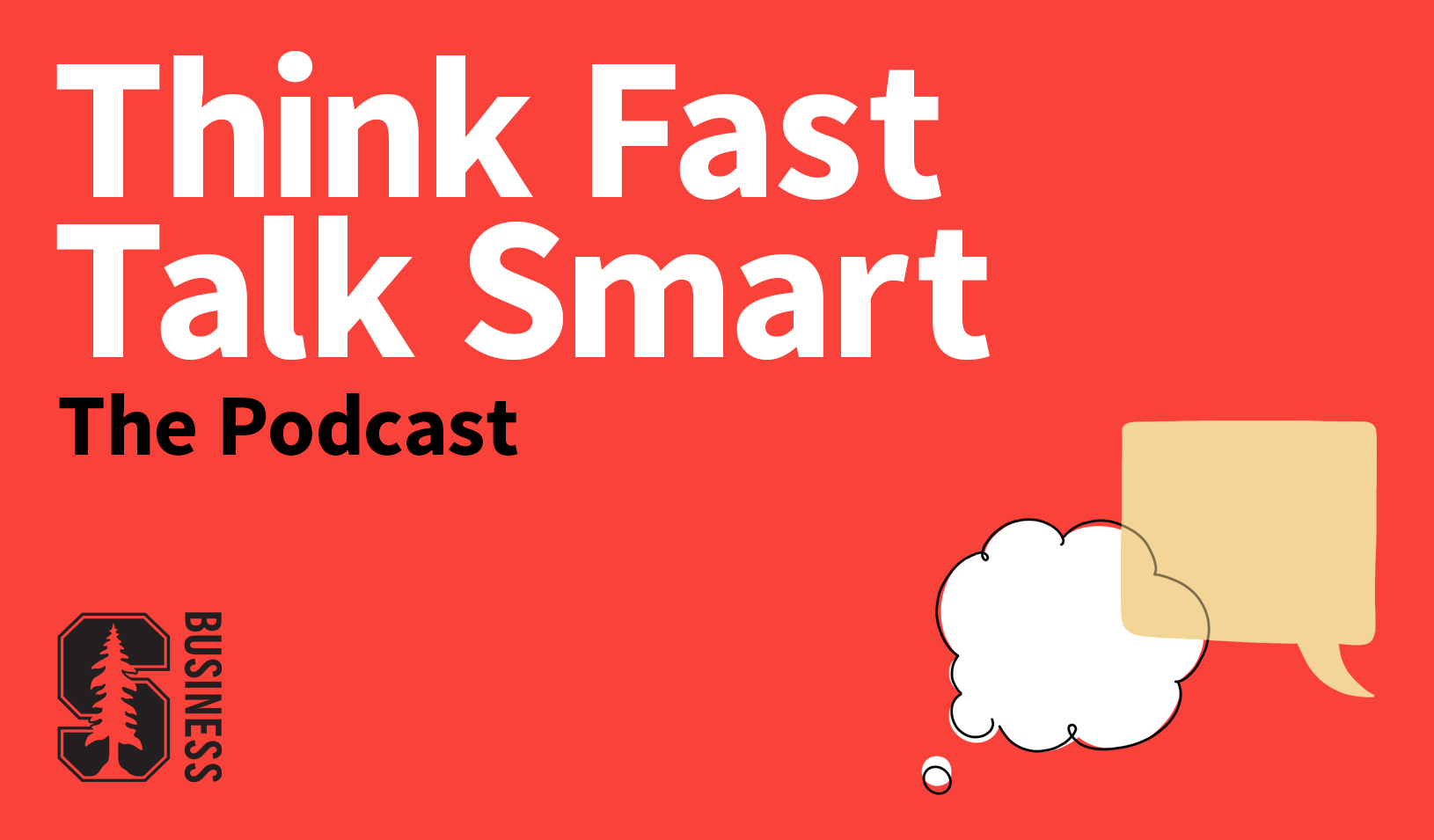
In Interpersonal Dynamics, students learn how the way they behave impacts others — and what that might mean to their success as future leaders. | Elena Zhukova
Strong relationships are a vital part of effective management, and yet most of us, especially this year, interact far more with screens than with human beings. Recognizing the critical importance of forging deep connections with others — and learning how to build those bonds in real time — is the focus of a course that’s been the most popular elective at Stanford GSB for decades: Interpersonal Dynamics (also known as “Touchy Feely”).
The iconic MBA course has taught thousands of students what it means to have “exceptional relationships” in their personal and professional lives and how to interact with others in a way that contributes to deeper, stronger connections.
Now, two of the course’s longtime teachers have teamed up to write a book based on its lessons. David Bradford, the Eugene D. O’Kelly II Senior Lecturer in Leadership, Emeritus, and Carole Robin, the former Dorothy J. King Lecturer in Leadership, are the coauthors of Connect: Building Exceptional Relationships with Family, Friends, and Colleagues, which translates what they’ve been teaching in the classroom for a broader audience. The book, which also includes case studies and self-reflection exercises, will be published in February.
Bradford joined Stanford GSB three years after the course was first offered in 1966, adding more sections and lecturers to meet the growing demand. Robin came to Stanford in 1998 to develop the program even further. They also created an executive-level offering, distilling the course into a five-day intensive. In 2017, Robin helped launch Leaders in Tech, a program designed to support and develop top executives of high-growth companies.
Interpersonal Dynamics — which currently reaches more than 400 students in 12 sections — is known for its “T-group,” or training group, sessions, where Stanford-trained facilitators help students discover more about themselves and the nuances of interpersonal relationships in order to build connections that are authentic, meaningful, and productive.
Here, Bradford and Robin talk about the course, their book, and the lessons to be learned from both.
Interpersonal Dynamics is one of the most popular GSB electives. What’s at the heart of the course — and the new book?
Bradford: It’s fundamentally about how to develop robust relationships and lay the foundation for them to become exceptional. An exceptional relationship is one in which we can be honest with each other, can trust each other, and can productively resolve differences and disagreements. It’s a relationship where we’re each committed to the other’s growth and development as well as our own.
You won’t develop exceptional relationships with everybody. That isn’t possible! Deep connections require a great deal of effort. Still, let’s say you have some relationships in your life that you know could be stronger. You’re not sure they’ll ever reach “exceptional,” but you know there’s room for deeper connection. The concepts in this book can help you move forward anywhere along the continuum.
What’s the draw of the class and a few lessons learned?
Bradford: If I can be myself and you can be yourself, then we have a greater chance of making a connection. Students find that to be both transformational and validating. But that process is also a risky process. As we start to build a relationship, you will inevitably do some things that will annoy me and vice versa. Do I take a chance of maybe losing this relationship by saying, hey, what you did really hurt me?
One of the tools we teach is the 15% rule. It’s saying something to a friend or family member that’s a little risky, or 15% outside your comfort zone. You consistently take that risk knowing it might not always work out. When it does, you find people to be more interesting and you know more about them, even if it’s not all positive.
Robin: Students learn they’re more likable and more interesting to their fellow students when they stop spinning their image and let others know who they really are. That, in turn, leaves them feeling known and affirmed in ways that many have never experienced in their life, which is one reason they describe this course as life-changing. They learn that beliefs and assumptions they’ve held for years about themselves, leadership, and relationships have ceased to serve them. For example: Feedback will ruin a relationship. That gets updated to: Feedback, when done well, can actually strengthen a relationship, as well as lead to more growth by both parties.
What’s surprised you about the course?
Bradford: One of the most striking observations we’ve had over the years is that deep, fulfilling, personal connections can happen with a wider range of people than we normally think possible. We can develop an exceptional relationship with someone whom we seem, outwardly, to have little in common with. We’ve seen it happen, again and again, in both personal and professional settings.
Connecting with others is more important than ever these days. How are we doing?

Carole Robin and David Bradford | Nancy Rothstein
Robin: We’re living at a time when it’s apparent people don’t know how to connect across differences. People have lost, or maybe never had, the capacity to be curious about what’s going on with other people. In the book, we talk about suspending judgment long enough to get to know somebody a little better to see if there’s a way to connect. Letting people know how their behavior impacts us is also really powerful.
A key model we describe is the interpersonal cycle. It helps us understand that, in any exchange between two people, there are actually three realities. Reality one is our own needs, motives, and intentions; reality two is the behavior we engage in when we’re in public; and reality three is how our behavior affects someone else. The model helps explain why most feedback isn’t nearly as effective as we’d hope. It’s because most people don’t speak from their area of expertise. Most of us act like amateur psychologists, trying to figure out why others act the way they do. If we can stay on our own side of the net, our feedback can be more accurate and help us deepen our relationships.
What do you hope people take away from the book?
Bradford: A very important message throughout is the notion that you always have choices. Often people say, “I can’t say this, I can’t raise this issue,” or “I’m helpless because the other person isn’t responding right.” But you have agency. You can choose not to deepen a conversation or have a relationship. Or, you can put in the work and build the relationships you want to a much higher degree than you thought you could.
Robin: While it might be hard to change behavior, we all have control over that. What we can’t change and is unfair to ask for is personality change. So, for example, I might be an extreme extrovert, but that doesn’t mean I can’t learn to make more space for others to speak up and not suck quite as much oxygen out of the room. The more I understand how my behavior impacts you negatively, and the more I care, the more incentive I’ll have to change that behavior. And then, when I do work hard and change that behavior, you not only feel less negatively about me and our relationship improves, but I also discover that you, and others, have all sorts of wonderful things to share and the incentive to create space for others is reinforced.
Where do you begin if you want more exceptional relationships at work?
Robin: In the business world, you can’t take years to get to know each other before you do business together. The sooner you can trust each other, the sooner you can be productive. It’s a trap to think you have to get it just right. You just have to start. One premise of the course and the book is that you’re not going to learn it until you do it.
Don’t start with the most difficult relationship in your life where you may not be able to get traction right away. Look for a relationship that feels worth investing time and energy in because you want to deepen it and then start taking some risks. It’s not going to happen overnight. It’s going to take time and energy. Many students have told us, “I thought the course would help me be a better leader, but it also helped me be a better human being.”
How do you see people using the book’s lessons during and after the pandemic?
Bradford: Before the pandemic, we could have conversations naturally. Now, we socialize over Zoom, but for most people, it feels surface-y. People are thirsty for deep discussions. I’m hoping people say, “I really miss intimate interaction, and the next time I’m talking to neighbors, maybe I can make it a little more personal now that I have these competencies.” Maybe people will be more likely to seize opportunities and make them more special. The book gives people ideas and cues on how to do it.
We aren’t promising you the “five easy steps to deep connections” because such steps don’t exist. One size does not fit all, which is something every student and executive participant has learned firsthand. What works for you might not work for someone else, and something that helps grow one relationship might fall flat in another. Exceptional is also not an end state, because relationships can always grow deeper. Instead, think of exceptional relationships as living, breathing organisms that are always changing, always in need of tending, and always, always capable of taking your breath away.
Anything else you want to share?
Robin: The fear we hold of taking risks is that it will negatively impact a relationship. Even if it does temporarily, beyond that is an even stronger relationship, if you keep at it. The payoff can be immense — a deeper relationship with others, but also with yourself.
Bradford: We don’t want people to think that every relationship has to be exceptional. If you have four or five exceptional relationships, that’s enough because it’s a lot of work. But we do hope that every relationship people have is at the least more functional, as well as a little bit deeper.
For media inquiries, visit the Newsroom.





